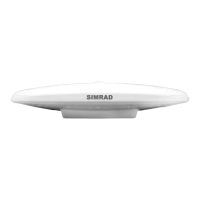13
TROUBLESHOOTING
Pin Purpose
Receiver fails to power • Verify the NMEA 2000
®
backbone is powered.
• Check the voltage coming out of the connector at the end of the
cable.
• Check current restrictions imposed by power source (minimum
available should be > 1.0 A).
No data from the HS75 • Verify that the NMEA 2000
®
backbone is powered.
• Check integrity and connectivity of cable connections.
No GNSS lock • Verify the HS75 has a clear view of the sky.
No SBAS lock • Verify the HS75 has a clear view of the sky.
• SBAS lock is only possible if you are in an appropriate SBAS
regions. Currently, there is limited SBAS availability in the southern
hemisphere.
No heading or incorrect
heading value
• Monitor the number of satellites and SNR values for both antennas
in the display unit. At least four satellites should have a strong SNR
value in both antennas.
• Heading is from primary GNSS antenna to secondary GNSS
antenna, so the arrow on the underside of the HS75 is directed to
the bow.

